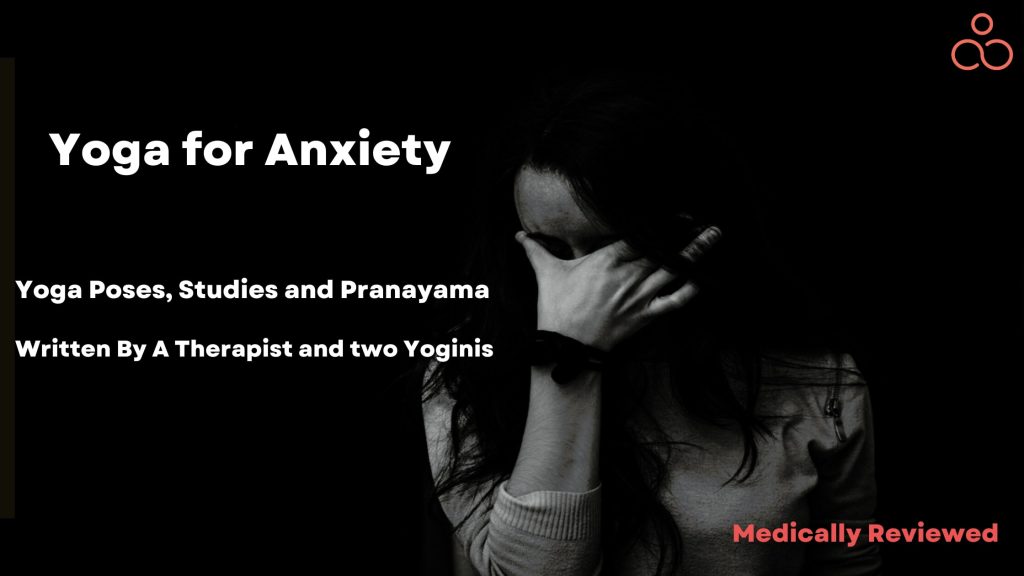I had panic attacks and surprisingly didn’t even realize it was due to anxiety. Even as psychologists, we are not immune to it. They were occasional and not consistent, but the fight or flight response prevented me from thinking clearly, and the deep feelings were panicky. Rationalizing my way out of anxiety might not be of real help. Yoga for anxiety is what you need to explore if you are sailing in the same boat. A study conducted on women shows that Yoga could be used as a complementary treatment method in reducing and managing stress, anxiety, and depression. Read through the sections below to understand how Yoga and Meditation practices might help your body and mind.
Anxiety, Stress, Or Depression?
Let us first try to understand these commonly used terms – Anxiety, Stress, and Depression, before we jump in to understand how Yoga helps. I feel these terms are commonly used interchangeably as all three are similar in nature. But mind you, they are all different, and we might be looking at the wrong answers if we are unable to define where we are standing correctly.
Stress, in simple terms, is a physiological response to a situation. Stress is not all bad. A healthy amount of fear is always necessary for growth. The real trouble arises when you experience stress more consistently or for longer durations that might impact your mental health or your productivity in a day. To understand more about stress and how Yoga could help, read our article on Yoga for Stress.
Anxiety is a state that you experience as a response when you feel more stressed. In simpler terms, anxiety is the next level to stress. Anxiety creates a sense of fear and worry due to a stressful event. It tends to keep recurring in situations even when the stressor is absent. Even the thought of such stressful events could sometimes push you to panic attacks.
Depression, on the other hand, is like an anxiety disorder sharing similar symptoms but is mainly associated with low mood, a lost feeling, or feeling inactive and lonely. Just like stress and anxiety, depression also interferes with your daily activities and functioning of life.
Do You Have Anxiety?
At a personal level, you can check for some common symptoms as listed here to identify if you are experiencing anxiety. But we would always recommend you consult your psychologist for a final word.
- Excessive Worry
- Feeling panicky, tense, or uneasy
- Restlessness
- Lack of concentration
- Insomnia
- Palpitations (the feeling of a racing heart)
- Excessive sweating
- Obsessive or uncontrolled thoughts
Suppose you are experiencing all or any of these symptoms persistently. In that case, you could be experiencing an anxiety disorder which could even push you to depression. So, act now and talk to a therapist!
Yoga To Help!
Yoga is a rare combination of body postures, Pranayama (special breathing techniques), meditation, and the centuries-old and wise yogic lifestyle. It helped not only me but also the founder of this page. It gave me some control over how much mental suffering I must endure, although it took me a while to reach this level, and I had to work myself up to it.
A 2017 research shows that even a single Hatha Yoga session could help you reduce the level of stress from an acute psychological stressor (a math task, trouble with your partner, increased demands, and so on) and slightly improve the level of self-confidence. Though more scientific studies are necessary, Hatha Yoga has shown promising results for those suffering from anxiety.
We have listed a couple of Yoga poses that you could try and practice to manage stress and anxiety in the long run. You might find some of these poses to be difficult, but make sure you keep trying patiently and stay focused on your breath throughout. Remember that learning to cope with stressful and challenging asanas will make you stronger and help you endure stress in the real world.
- Dhanurasana or Bow Pose – This is a back-bending pose that helps strengthen the spine and stretches the abdomen, thighs, ankles, thorax, and other muscles in the front of the body. It helps in improving the posture and stimulates the abdomen and neck. Do not push yourself too much on this pose if you have chronic back pain or any past back-related surgeries. Lie down on your belly and place your hands alongside your torso. Fold your knees towards your back and hold your ankles with your hands and try to find a balance. Lift your chest and hold your face straight, looking forward. Hold the curved position and focus on your breath. Exhale, release your ankles, and relax.
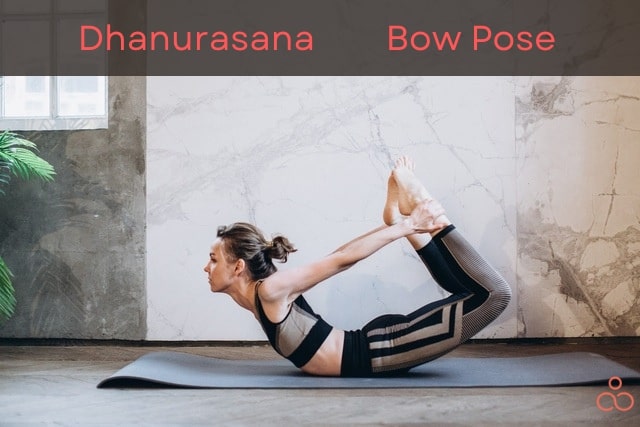
- Matsyasana or Fish Pose – A reclining back-bending pose that strengthens the upper back muscles and the back of the neck. Lie on your Matsyasana or Fish Pose: A reclining back-bending pose that strengthens the upper back muscles and the back of the neck. Lie on your back on the Yoga mat. Bend your knees with your feet firmly on the ground. Place your palms below your buttocks, facing downwards, and position your elbow and arms close to your torso. Lift your chest and arch your upper back. Try not to stress your head and avoid crunching your neck. You can either keep your knees bent or stretch out your legs straight and hold. Exhale and relax from the pose back on the Yoga mat. Bend your knees with your feet firmly on the ground. Place your palms below your buttocks, facing downwards, and position your elbow and arms close to your torso. Lift your chest and arch your upper back. Try not to stress your head and avoid crunching your neck. You can either keep your knees bent or stretch out your legs straight and hold. Exhale and relax from the pose.
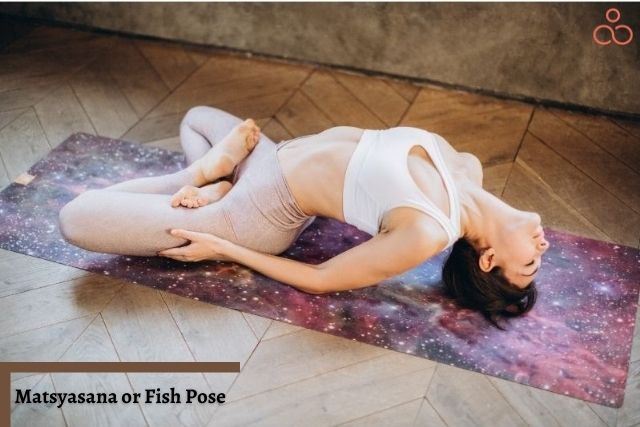
- Sethubandhasana or Bridge Pose – It is a basic back bending exercise, which helps in stretching the thighs, chest, neck, spine, and hips. It soothes the brain and improves the functioning of the central nervous system. Lie in the supine position on the Yoga mat. Bend your knees and place your feet firmly on the ground at hip-width apart and close to your buttocks. Place your arms alongside your torso and parallel to the body. Inhale and slightly raise your torso and push your pelvis and lower back upward. Hold the pose and release to relax.
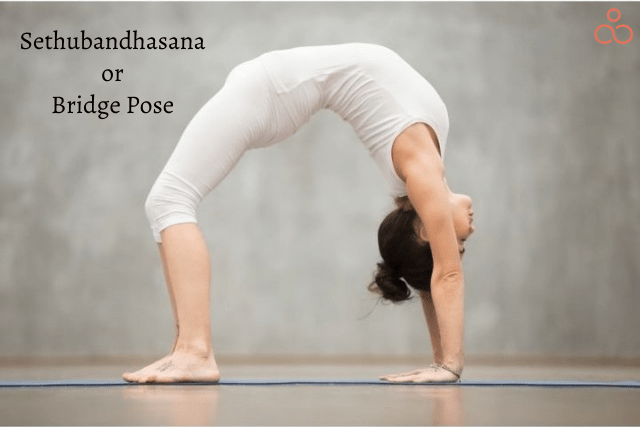
- Paschimottanasana or Two-Legged Forward Bend – This seated forward bending pose stretches your spine, hamstrings, shoulder, and vertebral column. It calms the brain and soothes headaches. It improves digestion and helps in lowering stress and depression. Sit straight with your legs stretched in line with your hip. Extend your arms straight above your head and inhale. Bend forward and exhale, trying to reach your feet. Focus on your breathing and the length of your spine. It is vital to hold this pose and not to bounce back immediately.
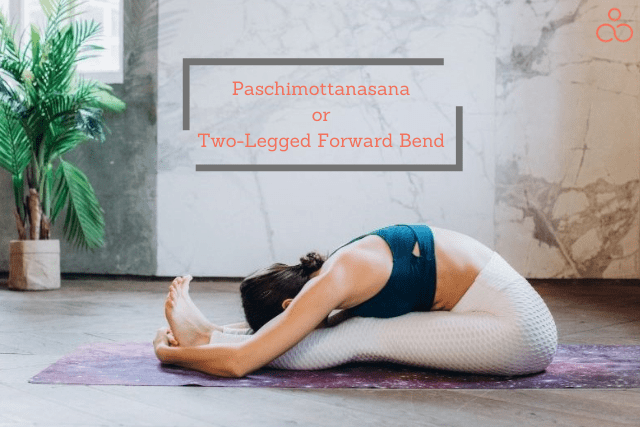
- Hastapadasana or Standing Forward Bend – This pose is also called the hand-to-foot pose. It helps in reducing belly fat, strengthens and stretches the spine, and improves digestion. Stand straight with arms alongside your body. Inhale and extend your arms up in the air. Exhale and bend forward to reach your feet. Try not to bend your knees while reaching your feet. Stretch your spine and place your palms on your feet or below the feet (if you are comfortable). Release the pose by inhaling while returning to the standing pose.
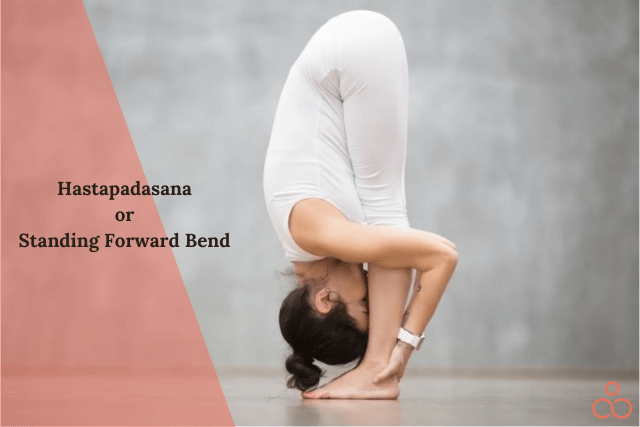
- Vrikshasana or Tree Pose – This pose primarily focuses on balance and improves your neuromuscular coordination. It helps strengthen your legs and improves alertness, concentration, and endurance. Stand straight with equal balance on both your feet. Slowly shift your weight to your right foot and lift your left foot off the ground. Bend your left knee and try to position your left foot on the inner side of your right thigh. Stay focused and retain your balance. Stretch your arms up above your head and try to join them for the perfect posture.
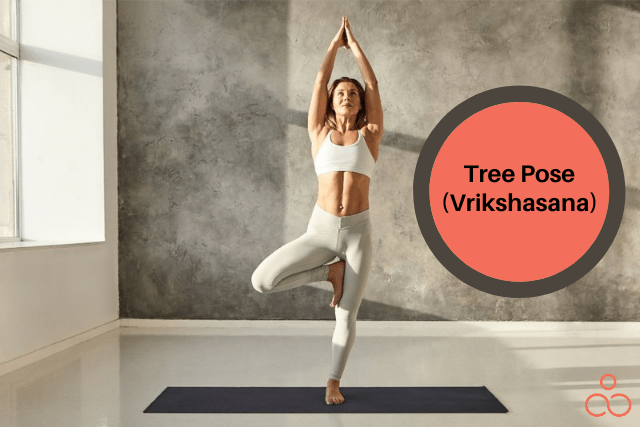
- Trikonasana or Triangle Pose – This standing pose helps in stretching and strengthening your thighs, ankles, hips, spine and helps relieve stress. It also stimulates abdominal organs. Stand straight and place your feet shoulder width apart. Stretch your arms horizontally side-ways. Slide your right arm on your right leg to reach the right ankle. The left hand will be in a straight line pointing to the ceiling above and opening the chest. Tilt your head to see the left-hand fingertips and hold for a minimum of 5 seconds. Alternate the sides.
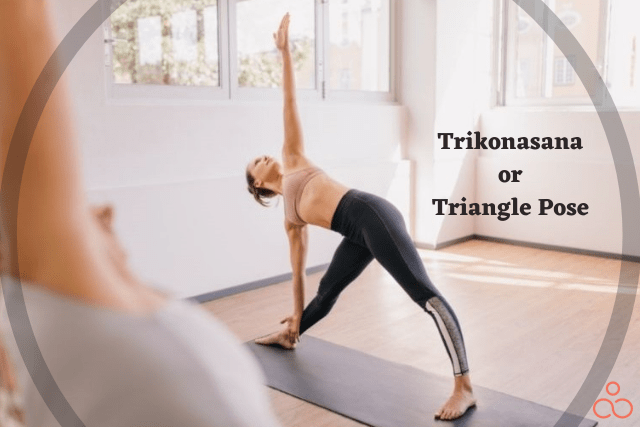
Remember to finish your Yoga practice with Yoga Nidra, as it is believed to flush out toxins from your body resulting in lower stress levels. A Washington Post article on a returned soldier with PTSD (Post Traumatic Stress Disorder) showed that Yoga Nidra helped him relax and cope. He attended a specialized care program in which 120 other service members participated, of which 90% had PTSD. After adding Yoga Nidra to the program, the results were positive. However, more scientific research is yet to be done on it.
Breathe Consciously – Pranayama
Best results are often achieved through consistency and dedication. If not daily, try practicing Pranayama at least as frequently as possible. Some of the most influential and popular breathing techniques are discussed in this section.
- Kapal Bhati Pranayama or Skull Shining Breathing: This breathing technique increases the metabolic rate and helps reduce weight. It stimulates the internal organs, thereby assisting in digestion and blood circulation. Sit in a comfortable posture and relax. Close your eyes and inhale deeply using both your nostrils. Exhale in parts by expelling the air with forceful contractions of abdominal muscles. Repeat the process for a minute or more.
- Bhramari Prayanama or Bee Breath: This breathing technique helps lower your blood pressure and aids in releasing cerebral tension. It promotes sound sleep patterns and relieves stress. Sit in a relaxed cross-legged position and close your eyes. Place your palms on your lap and inhale through both your nostrils. Make a buzzing bee sound while exhaling and try to retain the exhale for long.
- Bhastrika Pranayama or Breath of Fire: This breathing technique oxygenates the blood and energizes the entire mind and body. It calms the mind and increases the vitality of the organs. Sit in a cross-legged position and fold your arms to your shoulders and make fists. Inhale and stretch your hands straight up and open your fists. Exert a slight pressure while exhaling and bring back your arms to shoulders and close your fists. Repeat cycles and relax to normal breathing.
- Nadi Shodhan Pranayama or Alternate Nostril Breathing: A simple yet channelized breathing technique helps you stay more focused and pumps more oxygen to the brain. You can sit comfortably, either in a chair or cross-legged on a Yoga mat. Take a few normal initial breaths to settle in. Now inhale through your left nostril by closing your right nostril with your right thumb. While opening your right nostril, close your left nostril with your right-hand ring finger and exhale through your right nostril. Repeat the cycles with alternate nostrils.
In addition to Yoga Postures and Pranayama, try meditating for a minimum of 10-15 minutes every day. It will help you break your thought patterns and place you in a better position to make wiser decisions in life. Eat more fruits and vegetables and try to reduce meat consumption. You are what you eat, and if you are eating only dead animals, you might start to feel like one. Eating meat is fine, but we recommend you stop it, especially when you are going through depression or anxiety. Stay positive and believe that everything will fall in the right place. You have already been through so much; we are sure that you will be able to handle your current situation. If you are suffering from anxiety, remember times when you haven’t. Anxiety has come into your life, so it can go away also. Keep practicing!
Don’t try to treat your anxiety through Yoga. Find a suitable therapist and practice Yoga along.

